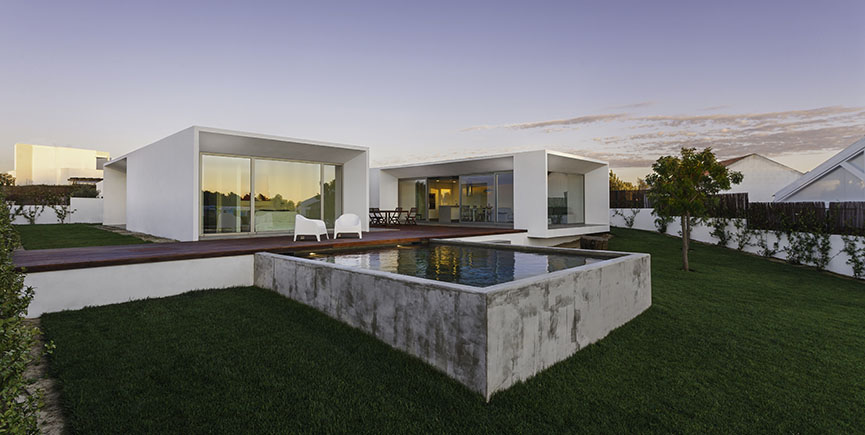How To Install An Above-Ground Pool?

How To Install An Above-Ground Pool?
Having an above-ground pool is a blessing if you can afford it. Even though the process might seem simple, there is a lot of planning and smart work that goes into it. The installation process of an above-ground pool depends on several factors. However, you need to have a team of pool builders working on it to ensure everything goes smoothly. That said, let’s discuss the installation process of above-ground pool installation in detail.
Prepare the Ground
The first step is also going to be the most important step when it comes to installing an above-ground pool. Preparing the ground will take time depending on the condition of the area. If the area has been neglected, it will need to be prepared. However, if the area is well-maintained, you should be able to prepare the ground with less effort.
You will need to remove all the sharp objects from the ground. If you have plantation or vegetation installed, you will need to remove them. Make sure that you remove them from the root as they might grow up later.
Once you have done that, dig out high spots and fill in the low spots. At the same time, you will need to look again and remove any sharp items, objects, or anything else that might influence or interfere with the installation process.
Above-ground pools are faster to install compared to in-ground pools, but you have to be as careful because any mistake can lead to pool damage.
Prepare The Pool Frame And Sand Base
After preparing a flat ground, proceed with the installation of the pool frame. This is yet again another important step for the safety of the pool. This means you must ensure that the pool track is properly level. If it’s not level, the pool might collapse.
For this, you have to first mark the points for pool supports. Then, place the blocks for the supports. Make sure the blocks are level with the pool track. Only then the installation of the top rail and walls will go well. For this purpose, if required, you can also fill the sand in the bottom rack.
Once the blocks have been laid, you will need to put some sand where the liner will rest. Ideally, you would want to pour 2 to 4 inches of sand so that in case the liner gets pushed, it goes into the sand and not into a foreign object.
However, if you want to have an above-ground pool around a patio or deck, you should get help from patio contractors Long Island.
Install The Body Of The Pool
When it is time to install the body of the pool, you will need one or two helping hands. While the pool is deflated, put it on the middle part of the pool. It will cover most of the pool. Check the square and round cutout areas of the pool. You must start these cutouts from where you want the pool equipment to be. Pool equipment can include pool filter and water pump.
In simple words, the positioning of the roll will depend on where the pool equipment will be installed. Typically, this might be the area where the roll ends. Ask your colleagues to keep the metal roll upright and hold the outside end. Then, place the roll inside the bottom rack.
Take your time with unrolling the roll as it is a bit tricky process. Plus, avoid getting the sand in the track so that the metal is completely located inside the track channel. While installing the pool body, make sure to install the top rack as well to prevent the pool wall from collapsing.
If needed, place something against the pool to support it. When you are done installing the wall, you are most likely going to be short at the end. Do not worry it is perfectly normal. Use a screwdriver and push it through both holes while using a bit of power to line the wall up.
Then again, be careful with the process and give it time instead of hurrying. This is important to ensure others parts of the body come out of the bottom track. Now that the step is complete, place all the necessary bolts and cover them with duct tape to avoid puncturing the liner.
Prepare The Floor And Install Supports
The next step is preparing the floor and installing the supports. This is a slightly intricate process considering the supports will bear the weight of the pool.
Furthermore, the amount of sand you will need to pour will depend on the design, size, and structure of the pool. Your pool may require comparatively less or more sand than the regular pools. Keep in mind that this step is the last opportunity for you to make sure all the measurements and dimensions are accurate.
Moreover, give it a thorough analysis and make final adjustments. Once the liner has been installed, it will become more difficult to make any adjustments.
Install The Liner
To install the liner, you will need to wet the sand first so that it doesn’t move during the process. Throw the liner inside the pool and unfold it as much as you can. A pool liner is a heavy material and will need at least 2 or 3 people to help install it.
It would be ideal to position one person outside and the other inside the pool to manage the liner. You will need to hook the liner and move around the pool to unfold it ensuring there are no creases. Once the liner is installed, make sure there are no wrinkles.
Install Skimmer Mouth, Filter, Pump And Return
Next, it is time to install the skimmer mouth, pool filter, water pump, and return. To do this, you will need to slightly fill the pool with water. This step is important not only for the skimmer mouth but the filter, pump, return, and other components. The installation of these components is fairly easy as they come with straightforward instructions mentioned on the product.
If you are still not able to process it, you might want to look at some other pools to get an idea. However, make sure that the components are properly installed. This is because the pool water will pass through these components and will leak even if there is a minor leak or crack. Plus, be careful while installing as the components might be damaged and result in water leakage.
Fill The Pool And Check For Leaks
Finally, it is time to properly fill the pool and check for leaks. This is where you will need to be extremely watchful of any unusual signs or symptoms. Keep in mind that some leaks or cracks are so minor that they are not visible. So, you might want to get closer and want to look out for any weird noises as well.
Once you are sure everything is perfect, add chemicals following the instructions mentioned on the packaging. Remember, do not use the products excessively as these are chemicals and might result in skin concerns.
Conclusion
Installing an above-ground pool requires time, effort, patience, and skills. You should consult pool contractors Long Island who know what to do based on the circumstances. At the same time, it is equally important to keep the steps mentioned above in mind to ensure you do not miss out on anything.

